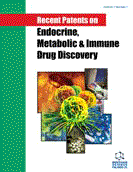Abstract
Members of the rhodopsin-like family, class A, of G-protein coupled receptors (GPCRs) are important targets for drug development and the recent better understanding of their molecular mechanisms of function is engendering new technologies for drug development. The aim of this paper is to review the patent literature covering sequence motifs and structural elements involved in the function of class-A GPCRs. One category of patents covers motifs associated with receptor signaling through G-proteins and signal termination mechanisms. In addition to the well established canonical signaling partners, many GPCRs are known to require accessory proteins for expression on the cell surface and a second category of patents covers the discovery and potential applications of accessory proteins. The pharmacological profiles of GPCRs are known to be sensitive to both homo- and heterodimerization and recent data suggest that tissue specific activities of some GPCRs are determined by the co-expression of interacting partners. Consequently, methods for identifying dimerization partners as well as bivalent ligands are likely to yield new targets and drugs with improved properties. Although the underlying mechanisms are not entirely clear, tissue specific expression of GPCRs provides an important avenue for targeted therapies and subfamilies of class A GPCRs with circumscribed tissue expression profiles, such as chemokine and melanocortin receptors, are important targets for cancer therapy. Thus, recent discoveries in the structure and mechanisms of function of GPCRs are yielding reagents with potential applications to drug development.
Keywords: Adaptor proteins, accessory proteins, beta arrestins, G-proteins, G-protein-coupled-receptor, sequence motif, signaling pathways, protein traffic.
 13
13





















